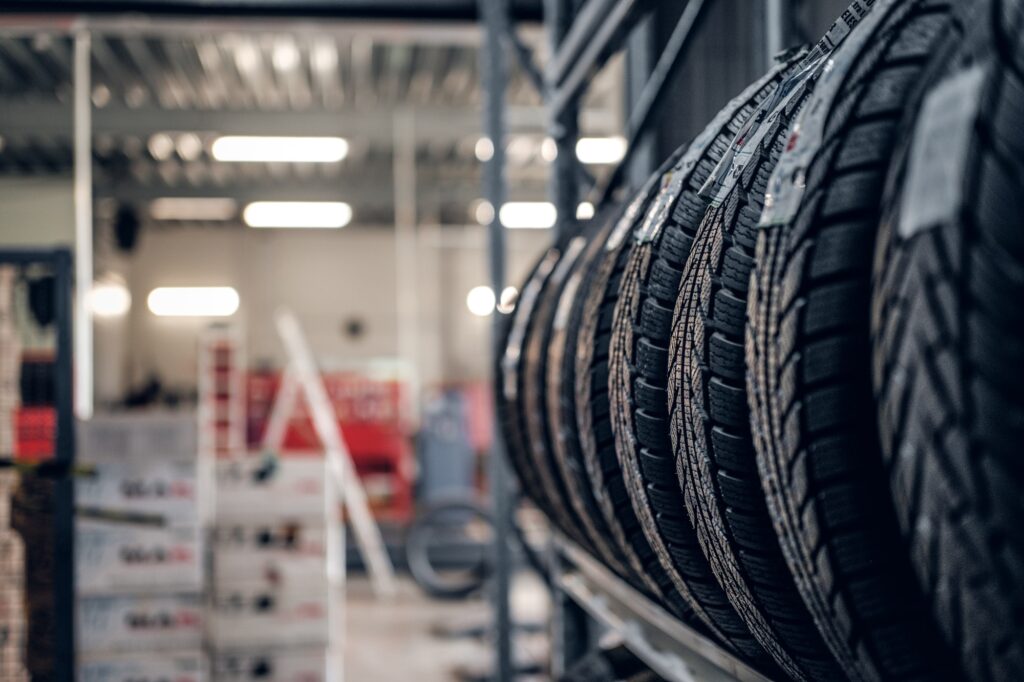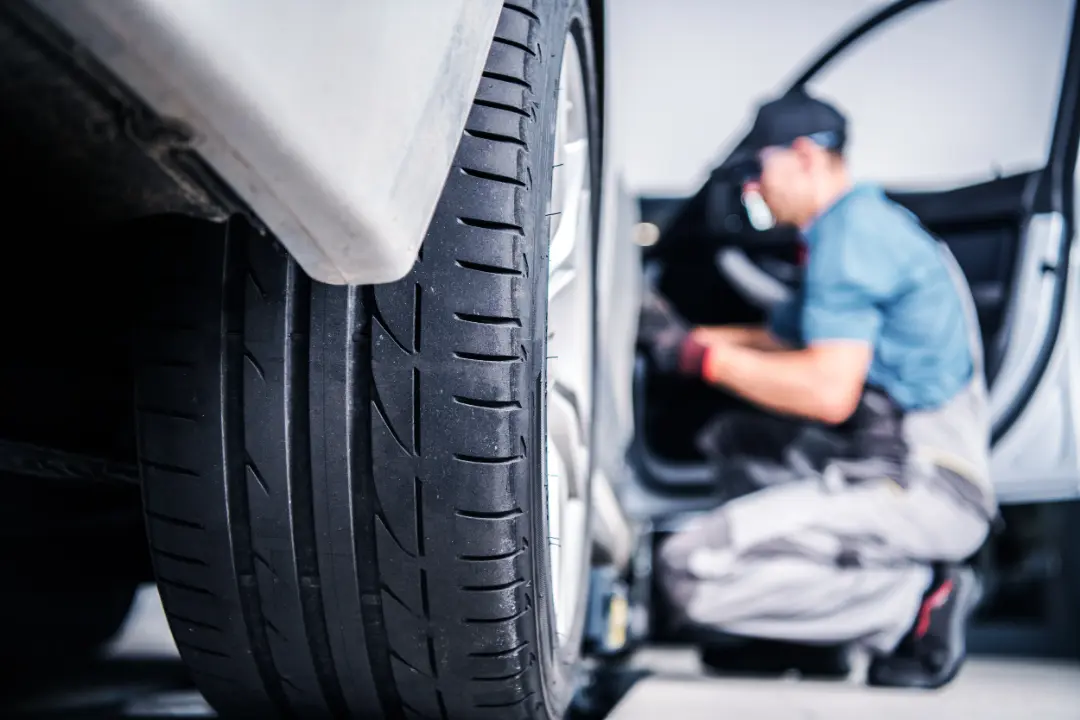Imagine cruising down the motorway, feeling the wind in your hair and the sun on your face, when suddenly – a tyre blowout! What was once a dreamy drive can quickly turn into a nightmare if your tyres aren’t in optimal condition. In a world where your vehicle’s safety and efficiency depend on the quality and maintenance of your tyres, knowing how to maximize their lifespan and when to replace them is of utmost importance. In this comprehensive guide, we’ll answer the question, “how long should tyres last,” and equip you with the knowledge and tips to keep your tyres in top shape, ensuring a smooth and safe ride for you and your passengers. Before you get into this article you, if you need any tyres in sittingbourne call AVS today, now lets get on with the article
Key Takeaways
- Tyre lifespan varies depending on usage, road conditions and maintenance.
- Regular tyre rotation is essential to extend the life of tyres and ensure optimal performance.
- Proper storage, inspections and driving habits are key for a safe & comfortable ride.
Tyre Lifespan: Factors and Averages
Tyre lifespan can be influenced by a variety of factors, including usage, road conditions, and proper maintenance. While front tyres generally last around 20,000 miles, rear tyres can last up to 40,000 miles. However, remember that these are just averages, and the actual life of your tyres depends on the care they receive and the specific driving conditions encountered.
With that in mind, we will examine some key variables that impact tyre life and how you can address them to optimize your investment.
Front vs Rear Tyres
Front tyres typically experience more wear than rear tyres due to the additional weight and steering forces. This can result in faster tyre wear and a shorter lifespan for the front tyres. To help prolong the life of your front tyres, regular rotation is essential. Some manufacturers suggest rotating your tyres annually or after 7,500 miles, whichever comes first.
Rotating your tyres ensures that wear is evenly distributed across all four tyres, which can prolong their overall life and maintain your vehicle’s smooth operation.
Tyre Age and Shelf Life
If stored properly, tyres can last up to 10 years, but on-road usage and exposure to the elements can reduce their lifespan. As tyres age, they can become more susceptible to damage such as cracks and bulges.
To ensure your tyres remain safe and efficient, it’s recommended to have them checked by a professional at least annually after they’ve been on a vehicle for five years or more. Regular inspections can help catch potential issues early, allowing you to address them before they become a safety hazard or cause further damage to your tyres.
Extending Tyre Life: Maintenance and Driving Habits
Proper maintenance and driving habits are essential in extending the life of your tyres. By taking care of your tyres and being mindful of how you drive, you can significantly increase their longevity and get more miles out of each set.
Next, we will discuss key maintenance practices and driving techniques that can help optimize the life of your tyres, ensuring a safe and comfortable ride for you and your passengers.
Tyre Pressure and Inflation
Maintaining the correct tyre pressure is key for even wear and fuel efficiency. Both under-inflation and over-inflation can cause premature wear and shorten the life of your tyres. The recommended tyre pressure for most vehicles is generally between 32-35 psi when the tyres are cold.
Check your tyre pressure at least once a month to make sure they’re properly inflated and performing optimally.
Wheel Alignment and Balancing
Ensuring proper wheel alignment and balancing is another key factor in preventing uneven wear and prolonging tyre life. Proper alignment involves:
- Adjusting the angles of the wheels to ensure they’re parallel to each other and perpendicular to the ground
- Helps to prevent uneven tyre wear
- Improves handling and fuel efficiency.
Wheel balancing, on the other hand, redistributes the weight of the wheel and tyre assembly, including the spare wheel, to ensure that it rotates evenly, thus preventing vibrations and further uneven tyre wear. For tyre maintenance, consider having wheel alignment inspected annually and wheel balancing conducted every 6,000 miles or twice a year.
Driving Style and Techniques
Your driving style can have a significant impact on the life of your tyres. Adopting a smooth driving style with controlled acceleration and braking can help extend tyre life and reduce wear. Avoiding rapid acceleration and hard braking not only helps preserve your tyres but also improves overall vehicle safety and fuel efficiency.
Being mindful of your driving habits can help your tyres last longer, providing a safer and more enjoyable driving experience with new tyres.
Tyre Selection: Durability and Performance
Choosing the right tyres for your needs can impact their durability and performance on the road. The type of tyre you select can affect how long they last, as well as how well they perform in various driving conditions.
Next, we will examine the differences between premium and budget tyres, as well as the advantages and disadvantages of winter tyres, to assist you in choosing the best tyres for your vehicle.
Premium vs Budget Tyres
Premium tyres may offer better performance and longevity for high-mileage drivers, while budget tyres can be suitable for low-mileage drivers who don’t require the same tyres as those who drive more frequently. Premium tyres, such as those from well-known tyre manufacturers like Bridgestone, Michelin, Goodyear, and Pirelli, are renowned for their superior quality and performance. However, they tend to be more expensive than budget tyres, which are produced by brands such as Sumitomo, Avon, Barum, and Firestone.
When choosing between premium and budget tyres, consider factors such as driving frequency, terrain, and maintenance habits to decide which option is most suitable for your needs.
Winter Tyres: Pros and Cons
Winter tyres, also known as snow tyres, provide better traction in extreme cold conditions but may have reduced performance in warmer temperatures. They are specially designed to improve grip on snow and ice, and are made from a rubber compound that remains flexible in cold temperatures, allowing them to maintain their grip on the road even in freezing conditions.
Although winter tyres can offer significant benefits in colder climates, they may not perform as well as regular tyres in warmer temperatures. Before making a decision, weigh the advantages and disadvantages of winter tyres based on your specific driving conditions and needs.
Tyre Replacement: Signs and Recommendations
Knowing when to replace your tyres is necessary for safety and legal compliance. Worn or damaged tyres can not only be a safety hazard but also put you at risk of fines or penalties if they don’t meet the minimum legal requirements.
Next, we will examine the signs indicating that it’s time to replace your tyres, along with recommendations for when to do so.
Tread Depth and Legal Limits
The legal tread depth limit for tyres is 1.6mm. However, for optimal safety, it’s recommended to replace your tyres when the tread depth reaches 3mm. Shallow tread depth can result in an increased stopping distance for your vehicle, particularly in wet or icy conditions.
Ensuring your tyres meet the recommended tyre tread and tread depth can help you maintain better control of your vehicle and minimize the risk of accidents.
Tyre Damage and Cracks
Visible damage, such as cracks or bulges, can indicate that a tyre needs replacement. Tyre damage and cracks may be attributed to exposure to UV rays and extreme heat, the age of the tyre, exposure to water, and incorrect tyre pressure. Driving with damaged or cracked tyres carries several risks, including reduced structural integrity, potential blowouts, and tread detachment. It’s essential to replace worn tyres to maintain safety on the road.
It’s necessary to promptly address any tyre damage or cracks to ensure safe driving and maintain your vehicle’s overall performance.
All Vehicle Services: Your Tyre Experts
At All Vehicle Services, we offer a range of expert services for tyre replacement and maintenance. Our experienced team of technicians can help you ensure your vehicle remains safe and efficient on the road. Our services include:
- Tyre repairs
- Tyre replacements
- Tyre balancing
- Tyre rotations
- Comprehensive car repair services
With over 50 years of combined experience in the industry, we are committed to providing high-quality services at our Sittingbourne-based car garage.
Whether you need assistance selecting the right car tyres for your needs, maintaining your current set, or identifying when it’s time for a replacement, our team at All Vehicle Services is here to help. Trust our expertise to keep your tyres in top shape and your vehicle running smoothly.
Summary
In conclusion, understanding how long tyres should last and the factors that can affect their lifespan is essential for maintaining a safe and efficient vehicle. By following the tips and recommendations discussed in this guide, you can maximize your tyre life, ensuring a smoother and safer ride. Remember to maintain proper tyre pressure, regularly inspect your tyres for damage, and consult tyre experts like the team at All Vehicle Services for all your tyre maintenance and replacement needs.
Safe travels, and may your tyres carry you far and wide, confidently navigating the open road ahead!
Frequently Asked Questions
How often should tyres be replaced?
For optimal safety and performance, tyres should be replaced with 3mm of tread left or around every 20,000 to 30,000 miles. Tyres that are 10 years’ old should also be replaced regardless of wear.
What is the average life of a tire?
On average, all-season tires can last between three and five years, depending on maintenance, driving style and conditions. With proper care, these tires should last around 12,000 to 15,000 miles per year, or up to 60,000 to 75,000 miles in total.
Are 5 year old tyres OK?
Given that the maximum safe lifespan of a tyre is estimated to be around five years, 5 year old tyres may not be safe.
What is the legal minimum tread depth for tyres?
The legal minimum tread depth for tyres is 1.6mm.
How often should I check my tyre pressure?
Check your tyre pressure at least once a month to ensure optimal performance and safety.


